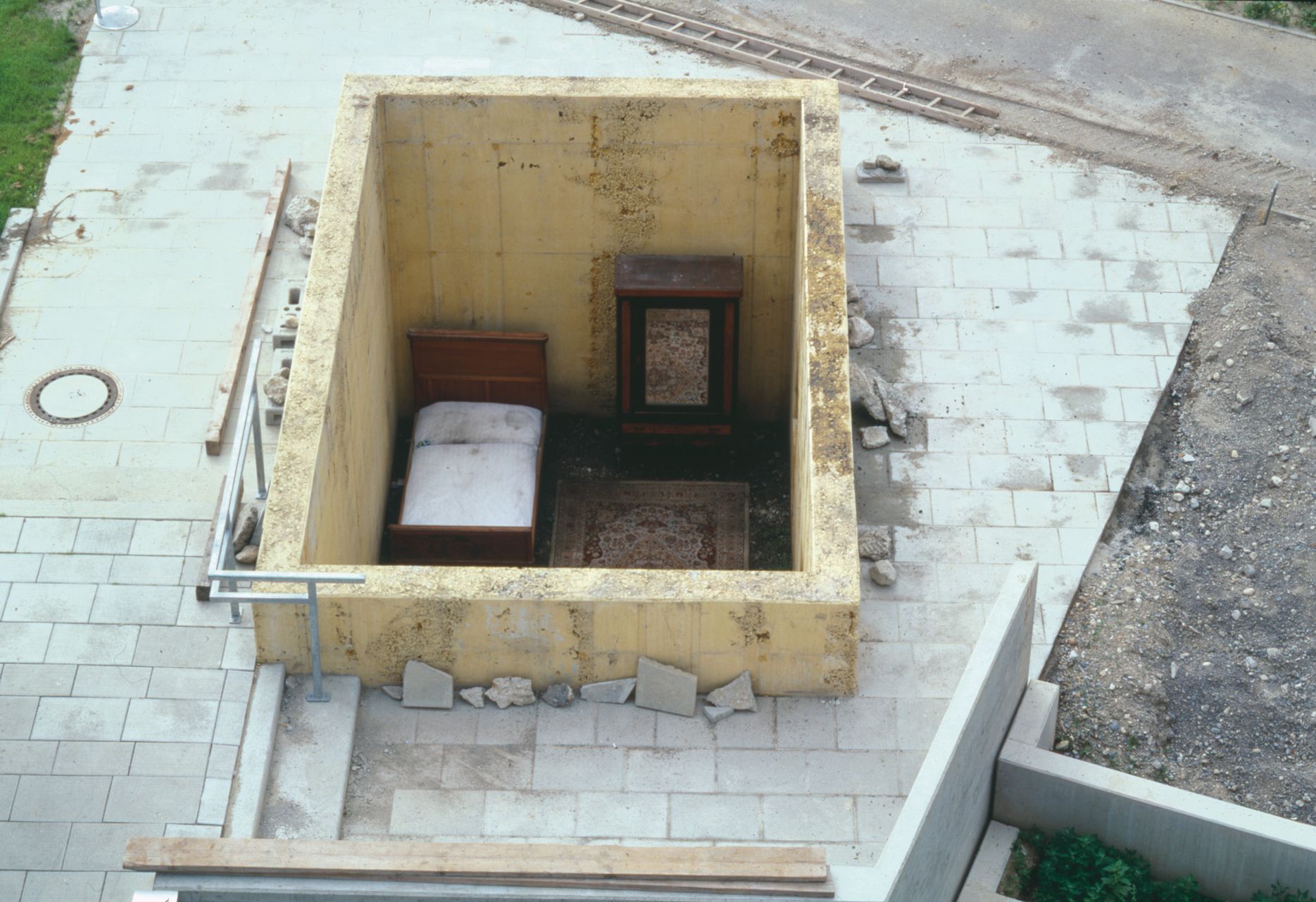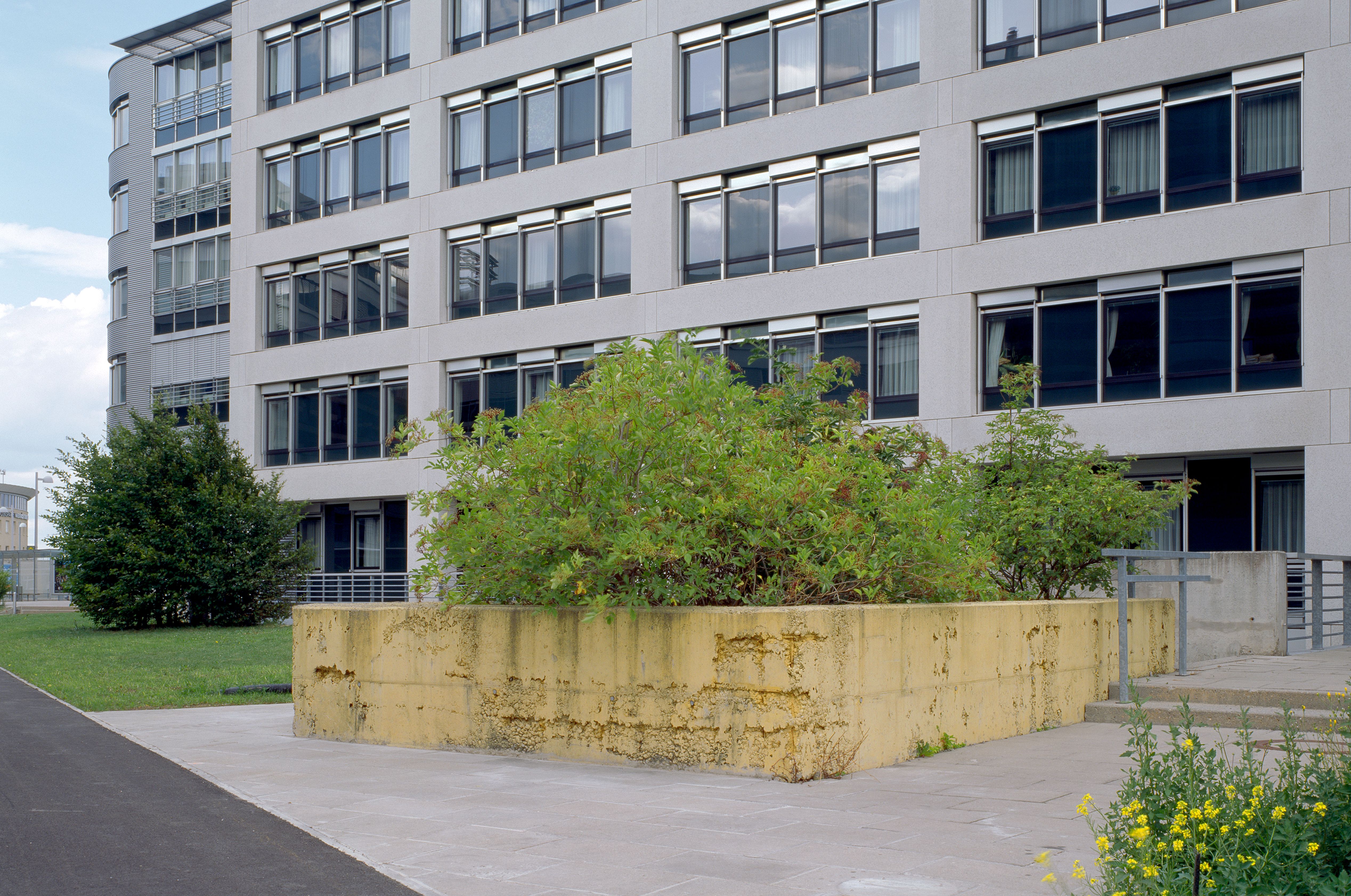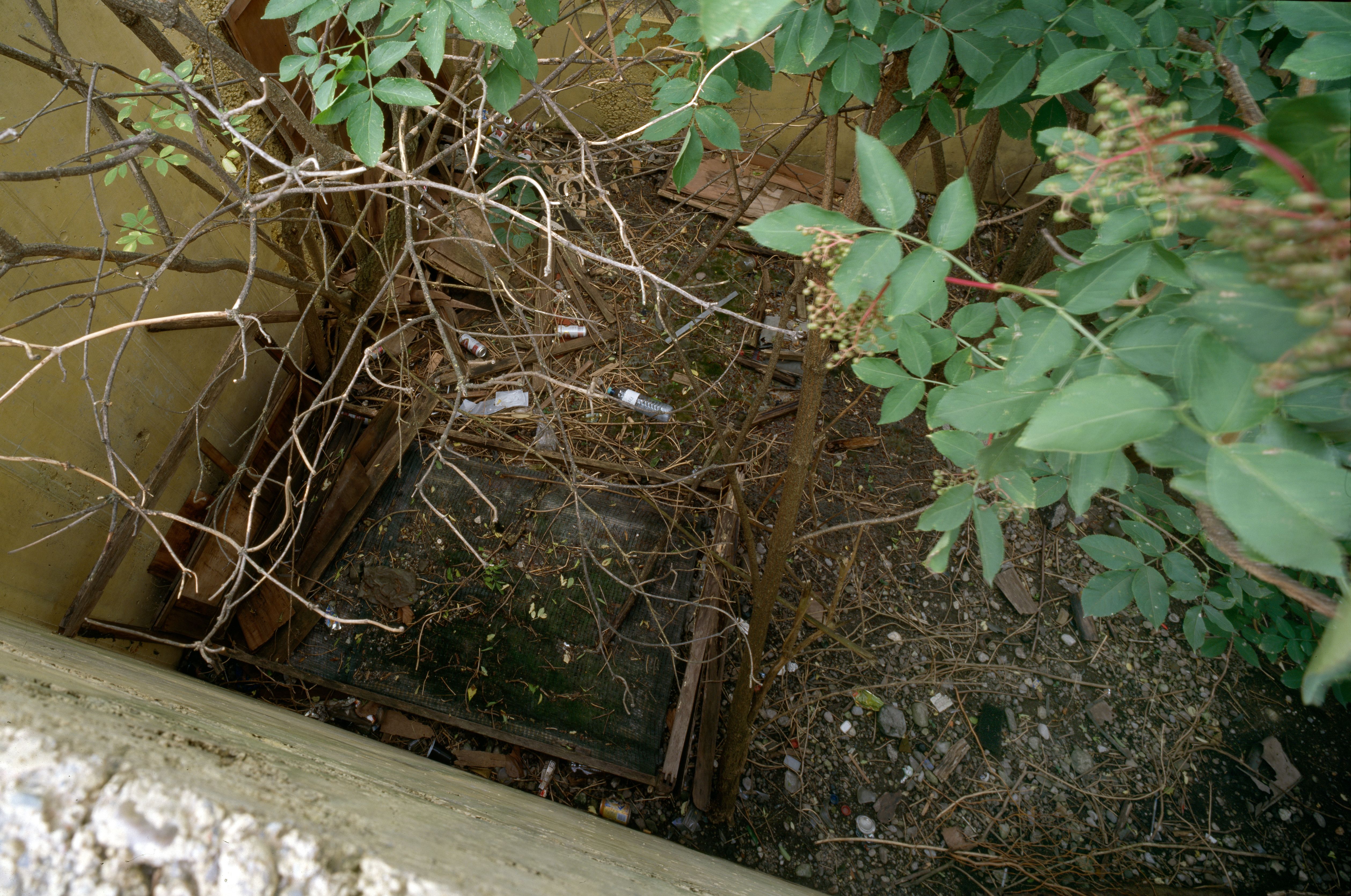Christoph Steffner
:
Zimmer
Back
Information
The two-stage competition provided the background to the artistic intervention in St. Pölten, for which seven artworks by Austrian artists were recommended for realisation. These projects are by Josef Danner, Bruno Gironcoli, Richard Hoeck, Hans Kupelwieser, Christoph Steffner, Thomas Stimm and Heimo Zobernig. Five commissions for interiors were awarded directly, to Gunter Damisch, Franz Graf, Brigitte Kowanz, Eva Schlegel and Walter Vopava. The winning project in a separate competition for the design of the chapel (1995) is by Arnulf Rainer. Additional existing artworks by Franz Xaver Ölzant, Oskar Putz and Ruth Schnell are also to be found in the Regierungsviertel. Works by Dara Birnbaum and Michelangelo Pistoletto, also selected by the first jury, are not realized.
Christoph Steffners "Room", one of the seven projects for St. Pölten selected by the jury, juxtaposes a cage-like room located below street level as a place of artistic production with the government district. It is a completely furnished room, which has apparently been deserted. The sunken room only constitutes one part of the concept, the other part consists of a temporal process of deterioration and weathering, that is to say, destruction brought on by time. Thus the "Room" presents itself as a contradictory place of dubious protection. The work explores the conditions of limitation and limitedness, the categorial characteristics of public and private at an allegedly public place and juxtaposes this room without any utopia and future with the newly constructed parliament building. It is a very unfortunate consequence of lacking curatorial interventions that the work is situated on the periphery of the government district instead of being placed in the center. Is this room, which originally began as something real and which will end up being completely buried, a temporal scale for the new city? The process of destruction is the subject of a classical observer situation: what is being destroyed becomes the metaphor of the destroyed, and it remains to be seen how the government district will weather this competition.



